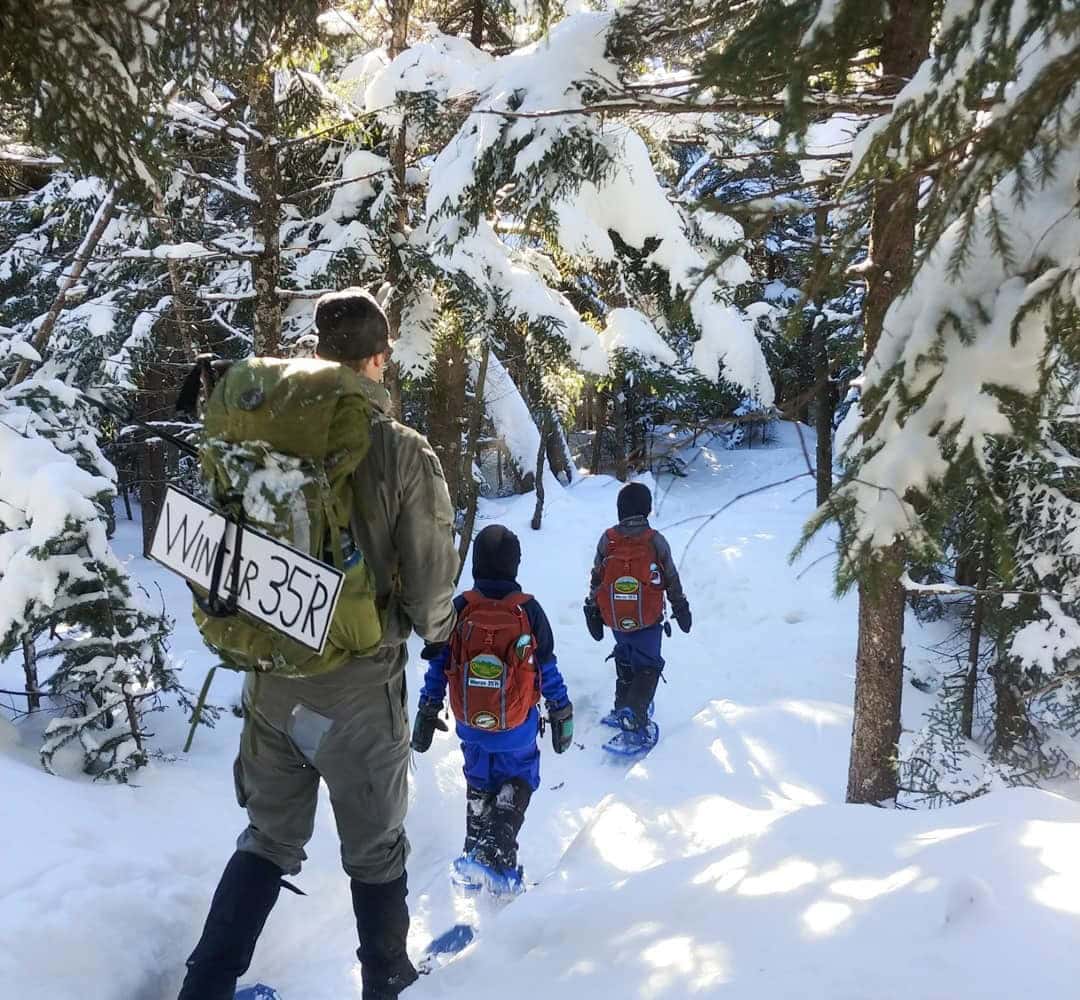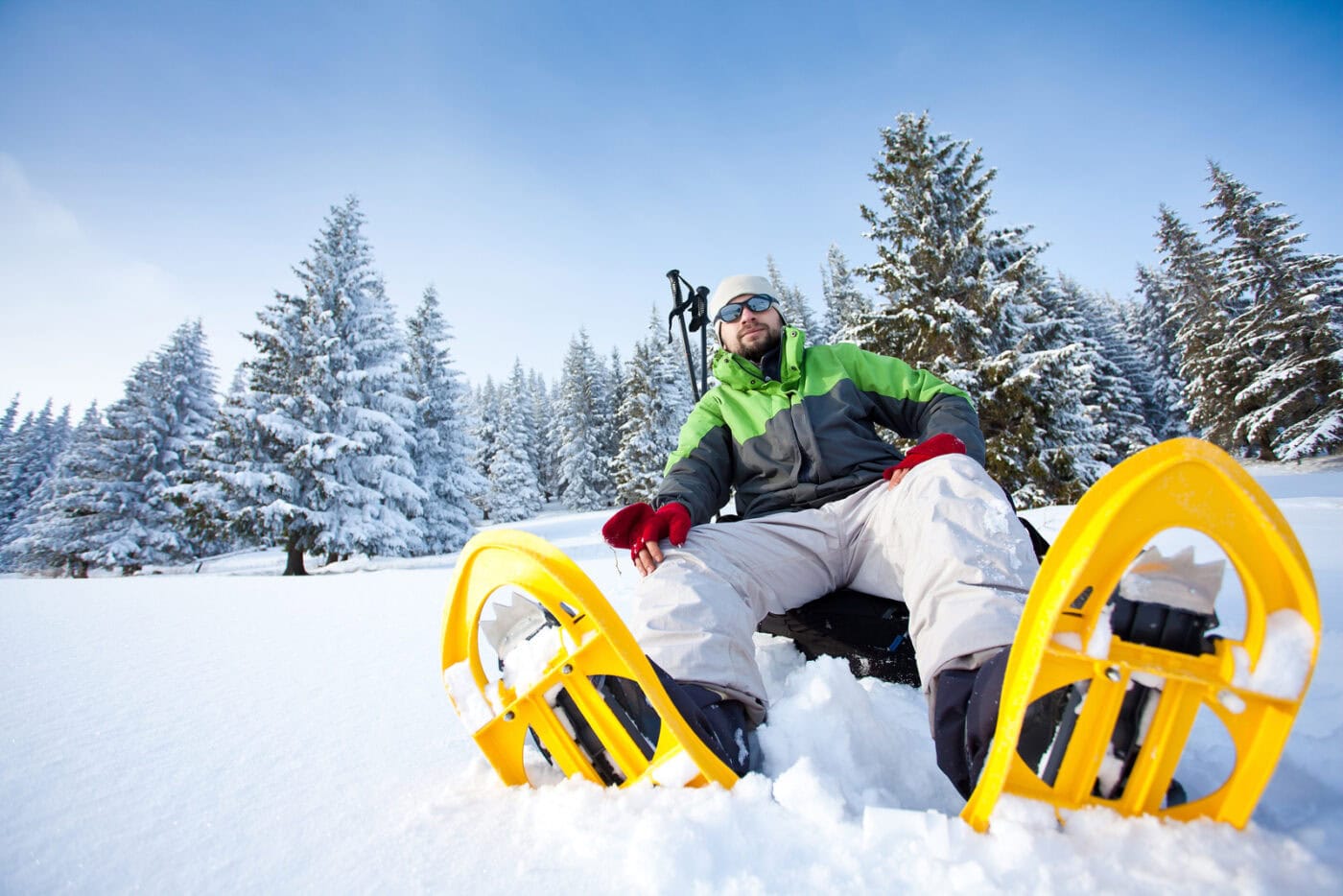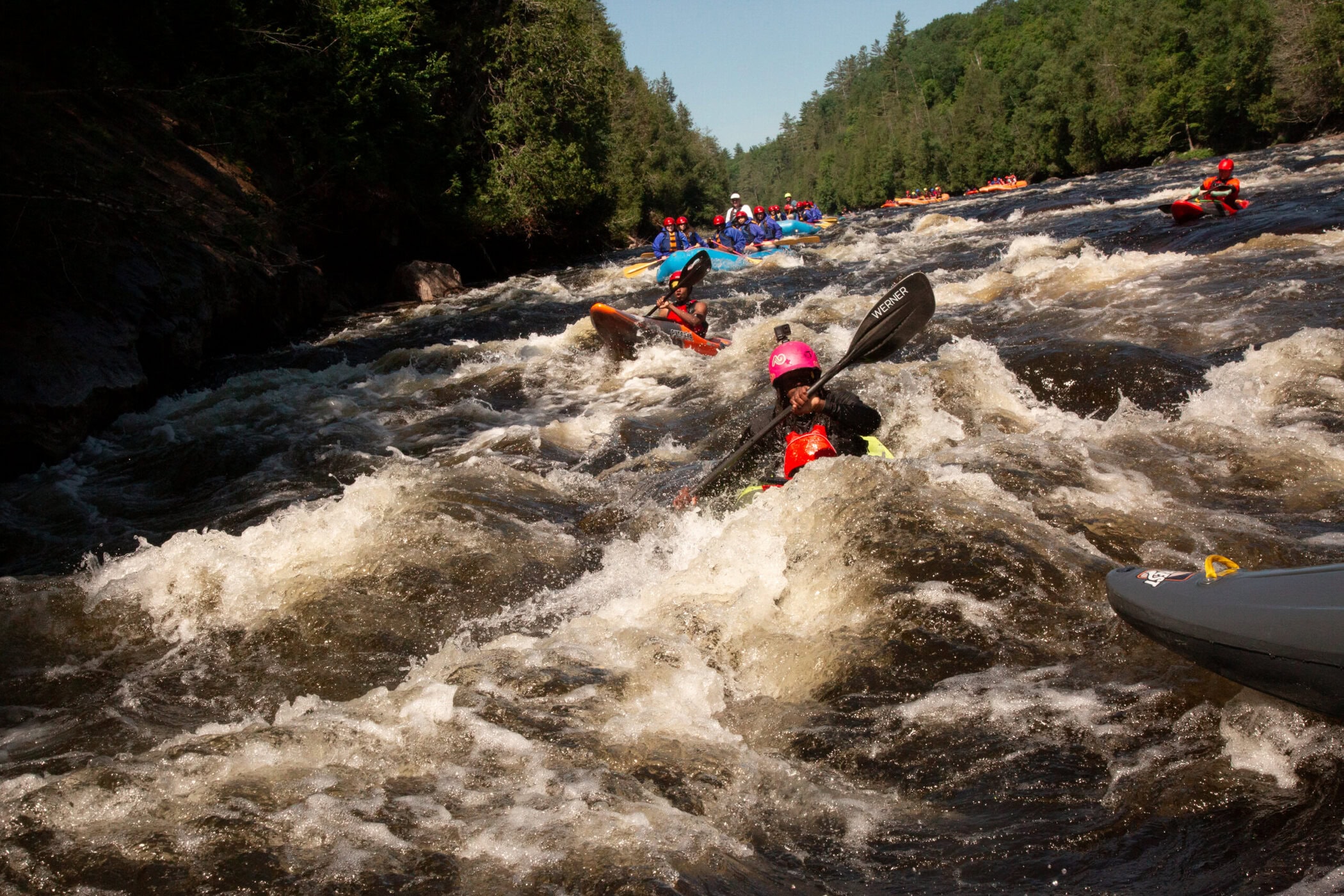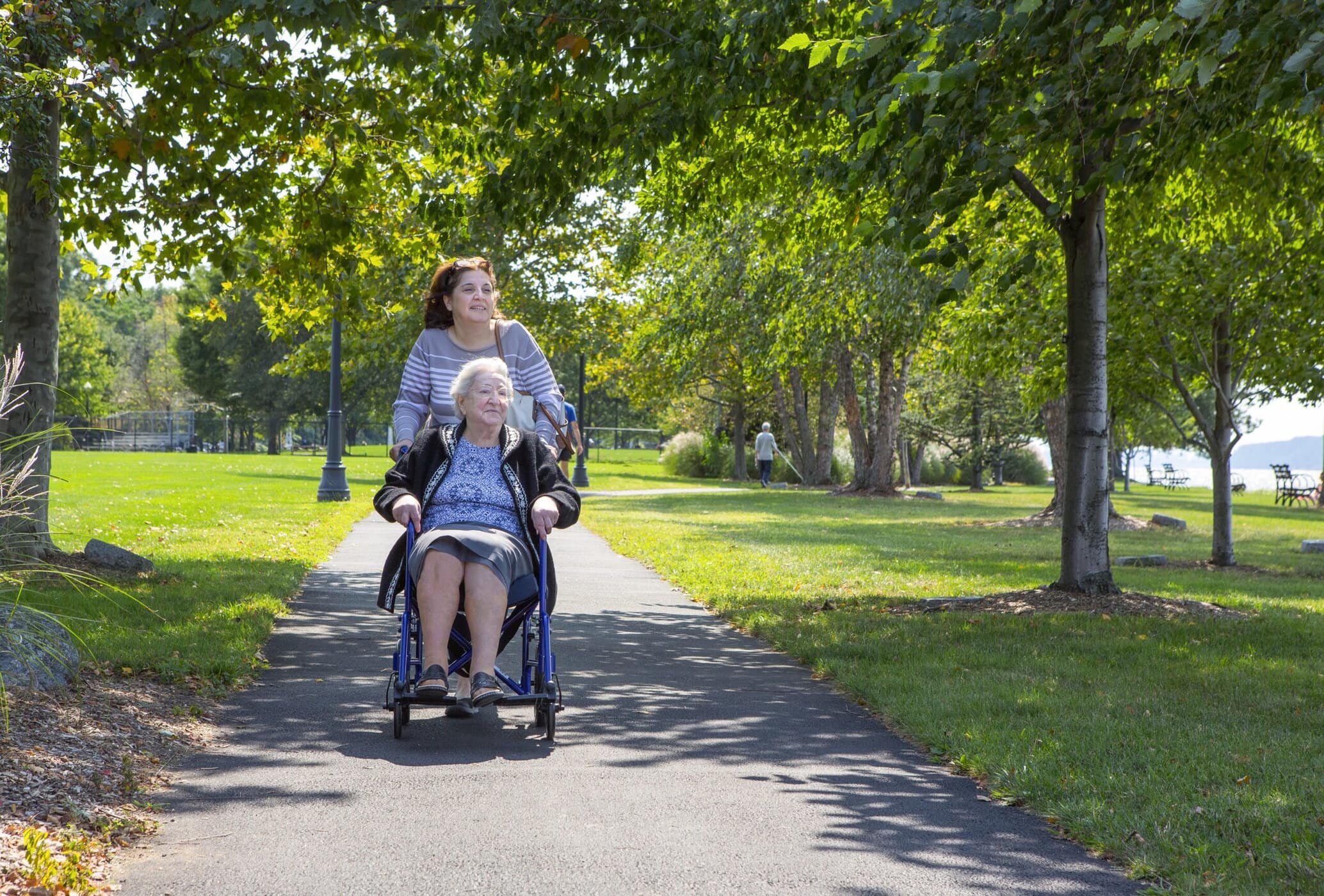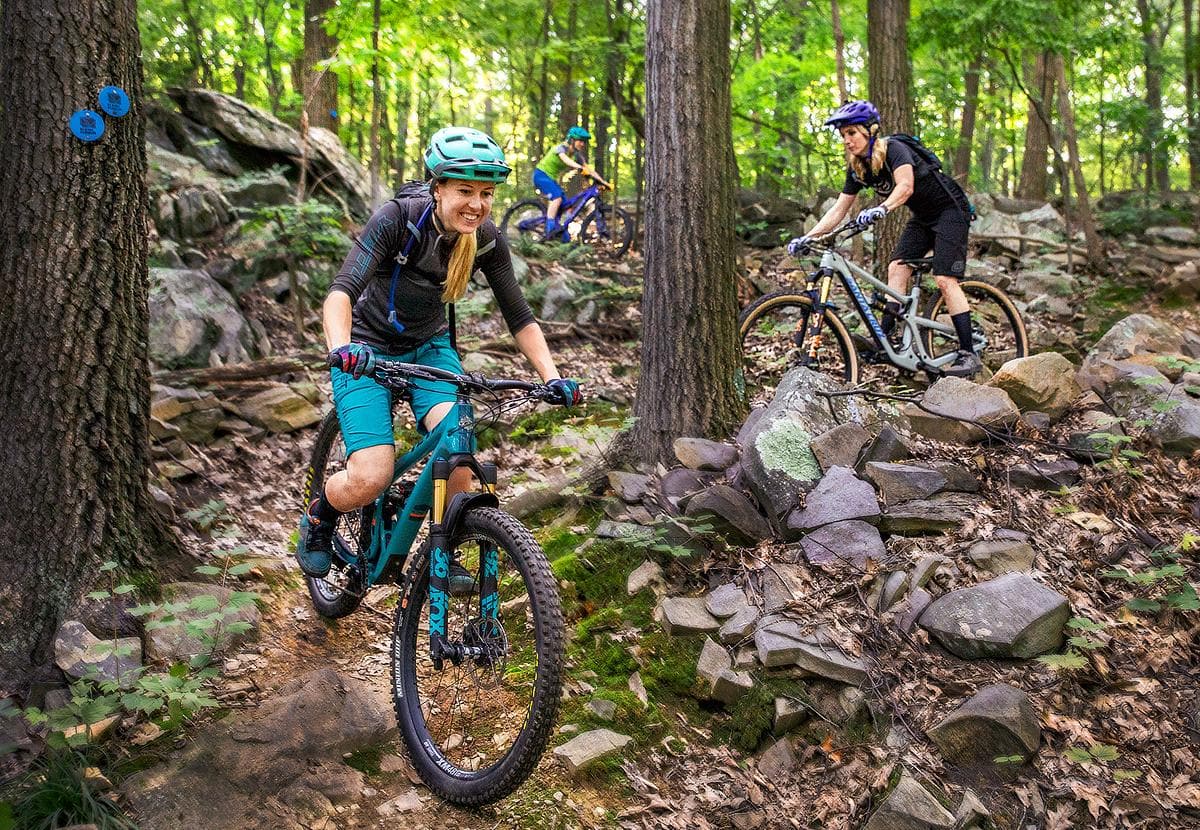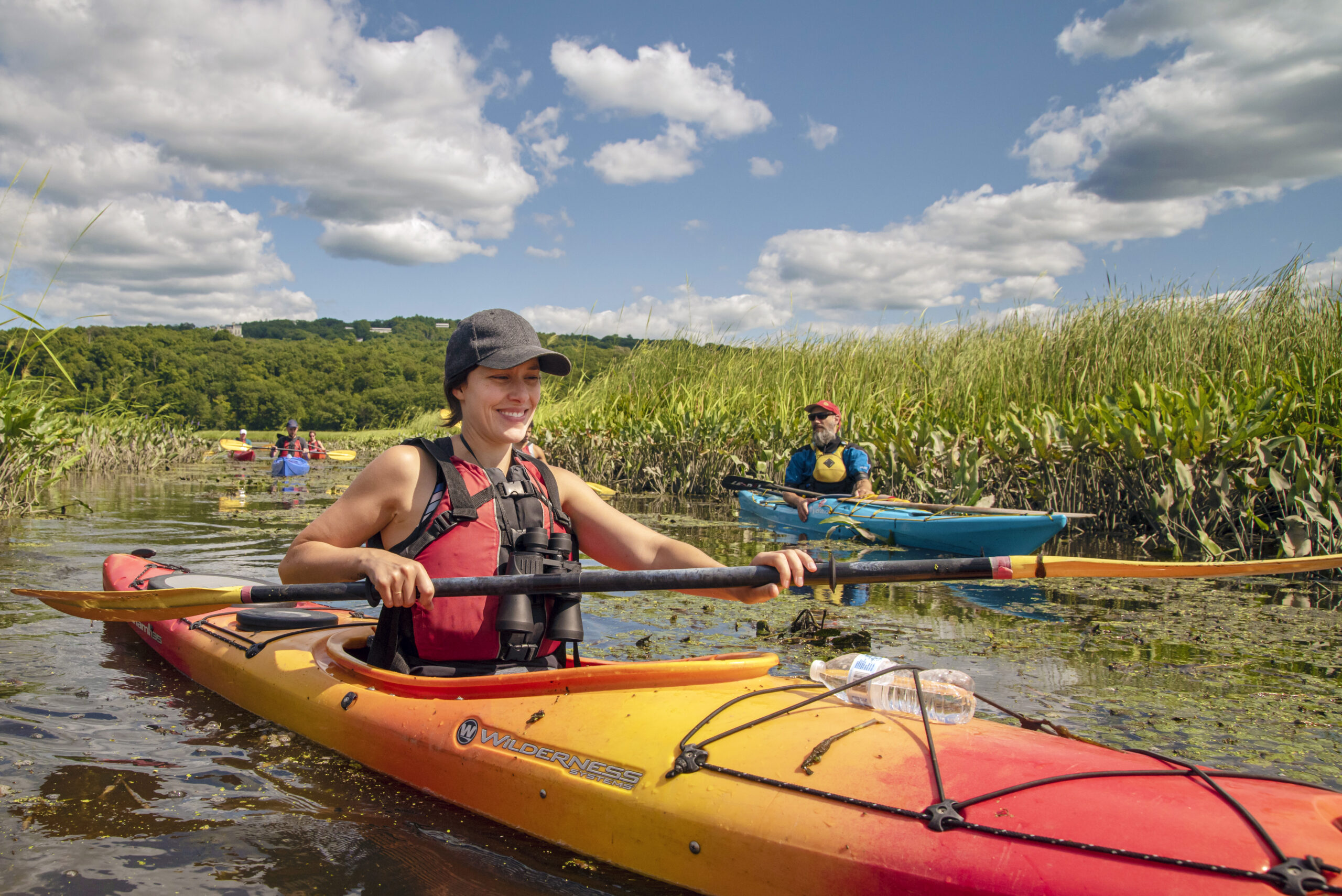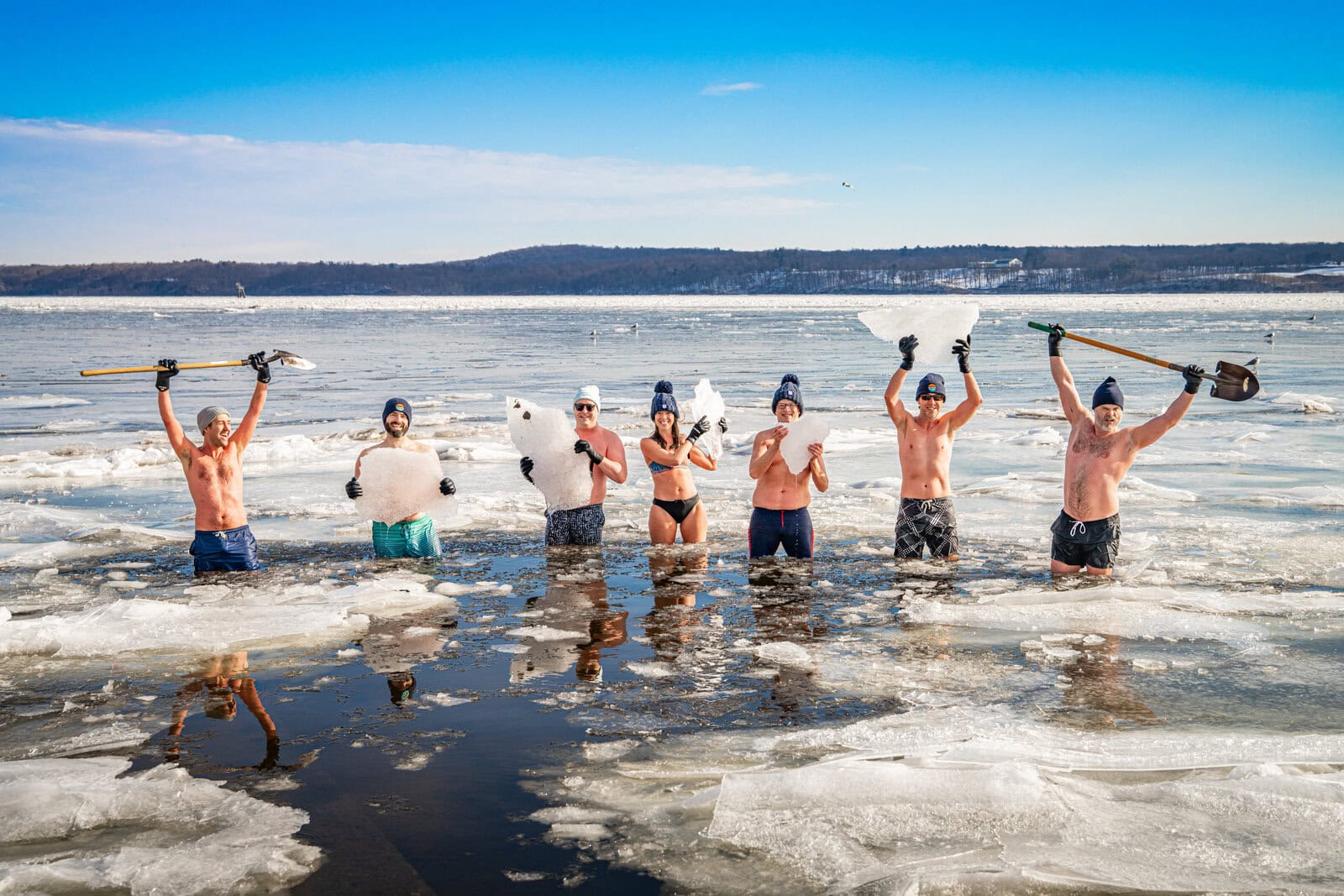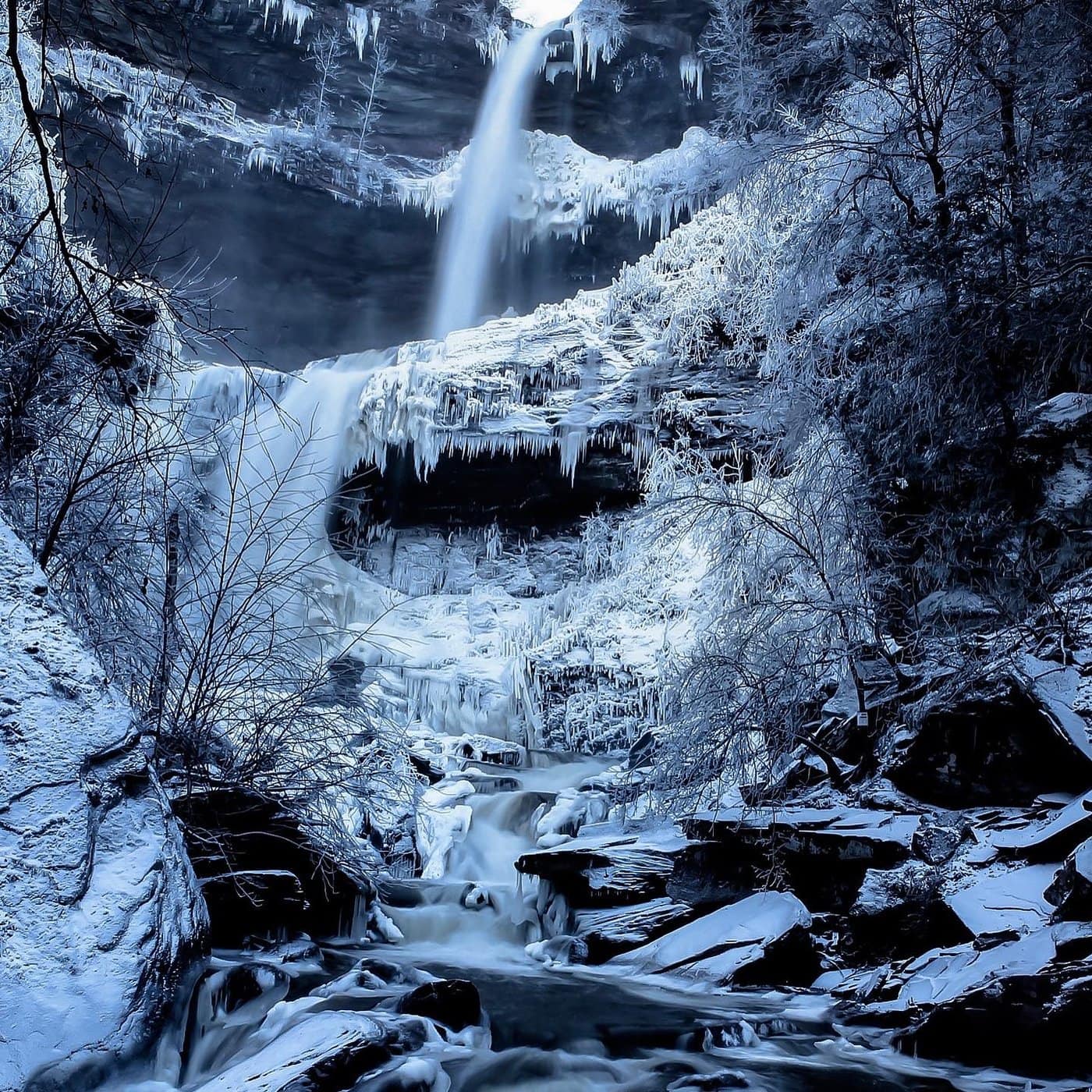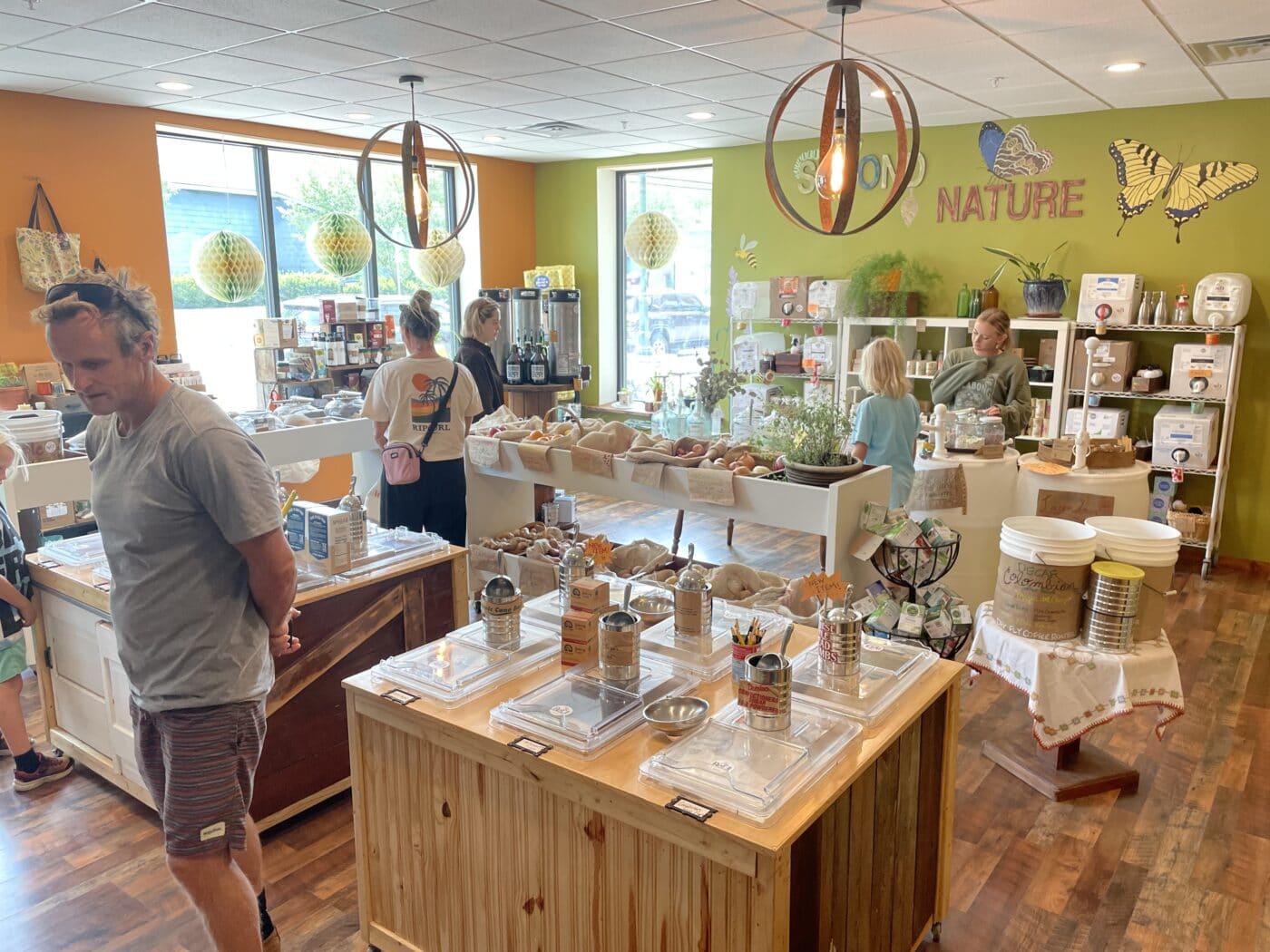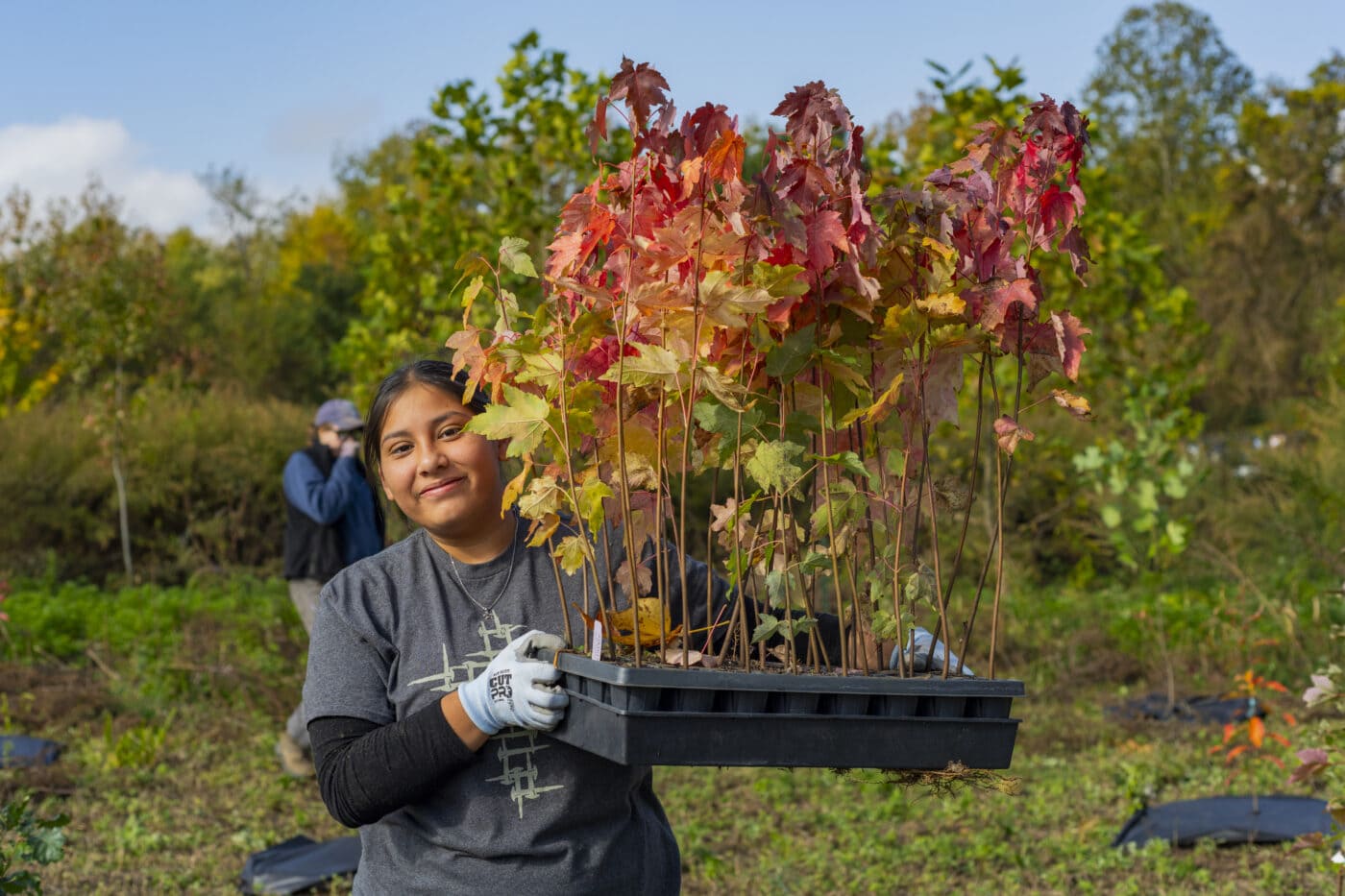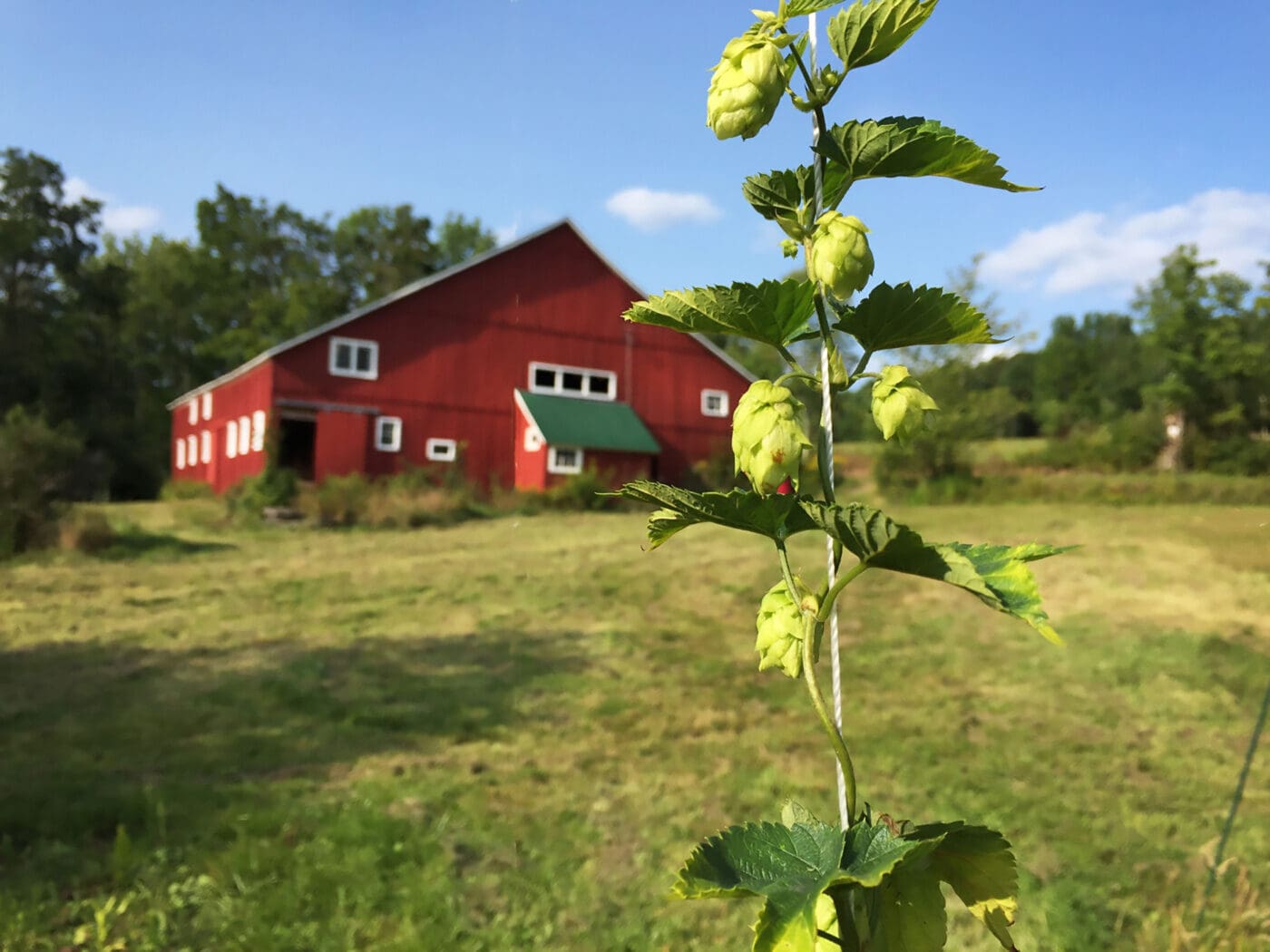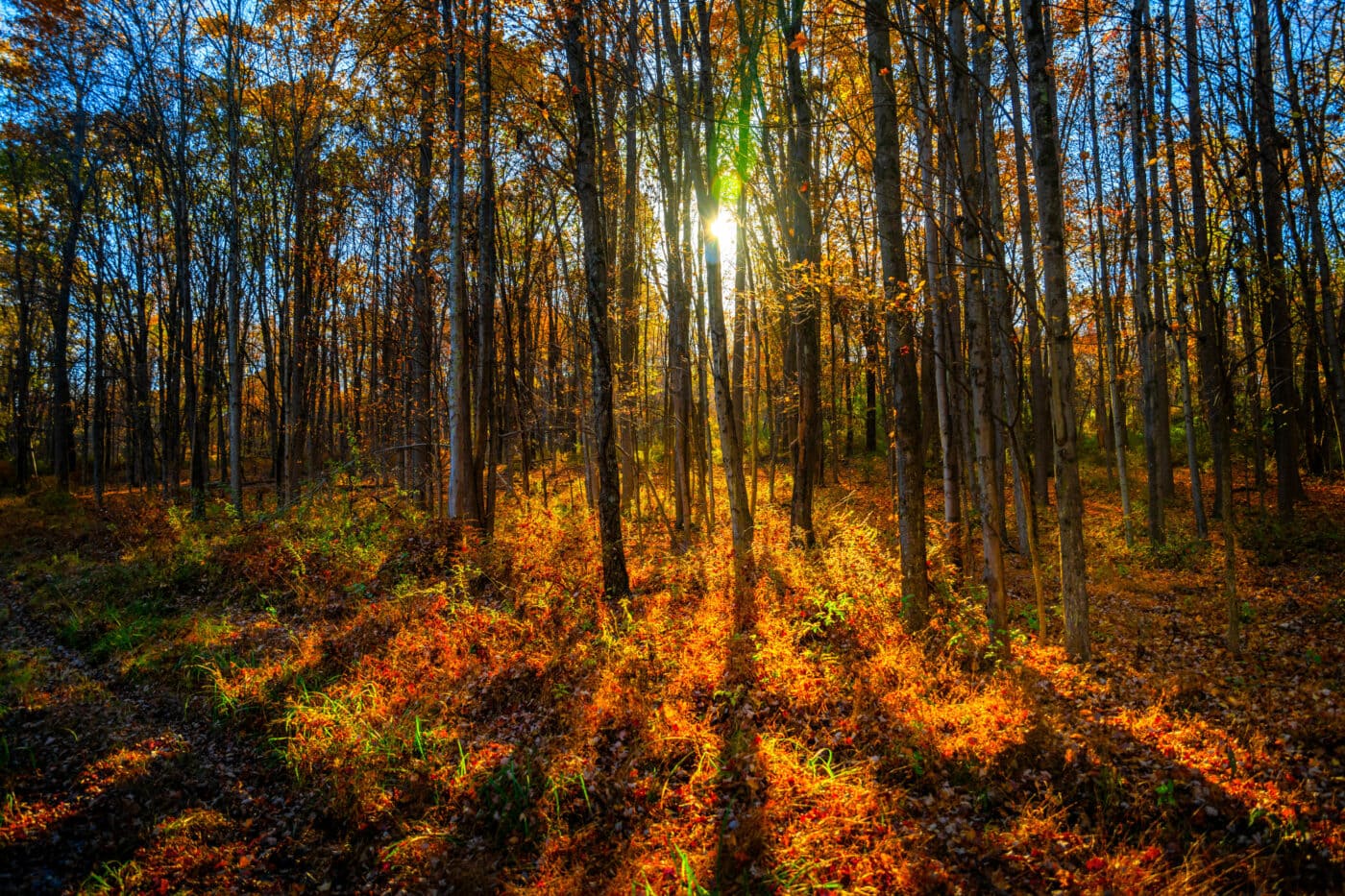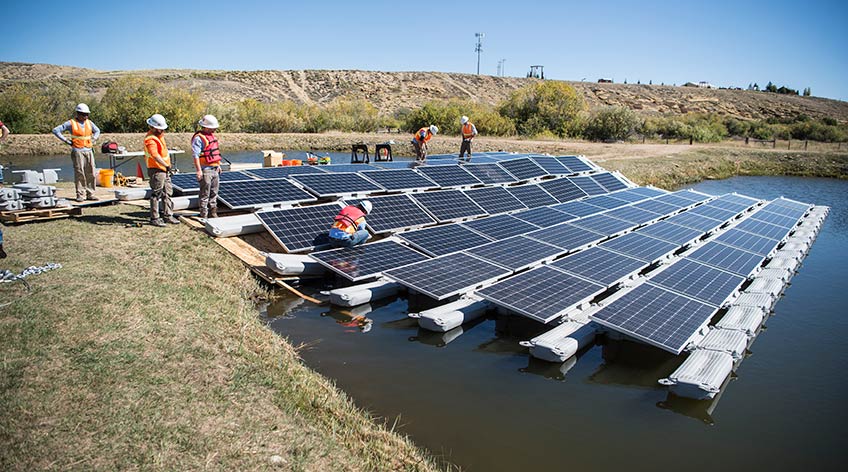Have you ever wondered what it feels like to float over snow rather than sink into it? Snowshoeing turns this magical experience into reality, transforming snowy landscapes into your personal playground. This timeless winter activity is inexpensive and accessible to people at all skill levels.
What’s more, snowshoeing is deeply rooted in Indigenous history, reflecting the innovations of different groups in traversing snowy landscapes. With a variety of trails, scenic parks, and welcoming communities, the Hudson Valley is a great spot to give it a go.
An Indigenous Innovation
Snowshoeing has a rich history rooted in ingenuity and adaptability. The concept of using wider footwear to avoid sinking in snow dates back 4,000–6,000 years in Central Asia, evolving into essential survival tools across snowy landscapes.
Indigenous peoples in North America perfected snowshoe designs to navigate diverse terrains, from the speed-focused Ojibwe snowshoe to the versatile Huron and compact bearpaw styles for dense woods. These innovations reflect a deep connection to nature and resourcefulness.
Today, strapping on modern snowshoes in the Hudson Valley means stepping into this legacy, blending history, exploration, and the joy of winter adventure. The Hudson Valley offers a variety of stunning spots perfect for tramping along at various ages and skill levels. The NYS Department of Environmental Conservation keeps a complete list of opportunities on DEC lands and state park properties, and Scenic Hudson keeps a log of parks that are conducive to snowshoeing, too. Here are a few general valley-accessible areas to start with.
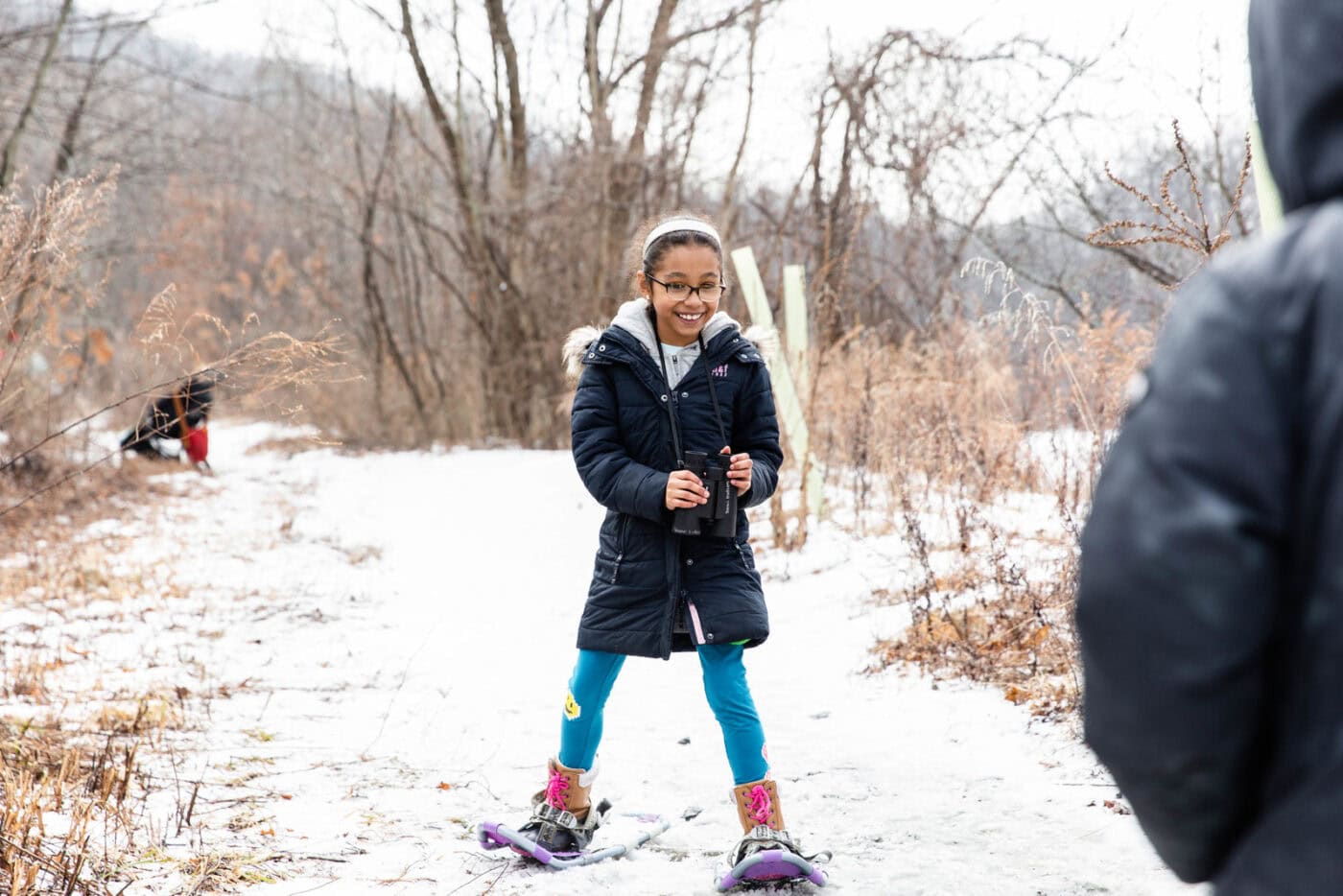
Key Snow-Stomping Grounds
Fahnestock State Park: A gem for beginners and families, with well-marked trails weaving through serene forests. Snowshoe rentals are available starting at $15 per day or $7 per hour.
Minnewaska State Park Preserve:
Minnewaska’s Sam’s Point Area offers trails like the Sam’s Point and Loop Road, perfect for beginners and moderate snowshoers alike. Sam’s Point rents snowshoes for $15. For beginners, Sam’s Point offers drop-in snowshoe lessons every Saturday during the winter months. These hour-long sessions teach you how to wear and adjust snowshoes confidently before venturing out. The Sam’s Point area offers stunning frozen lake views and trails suited for all levels.
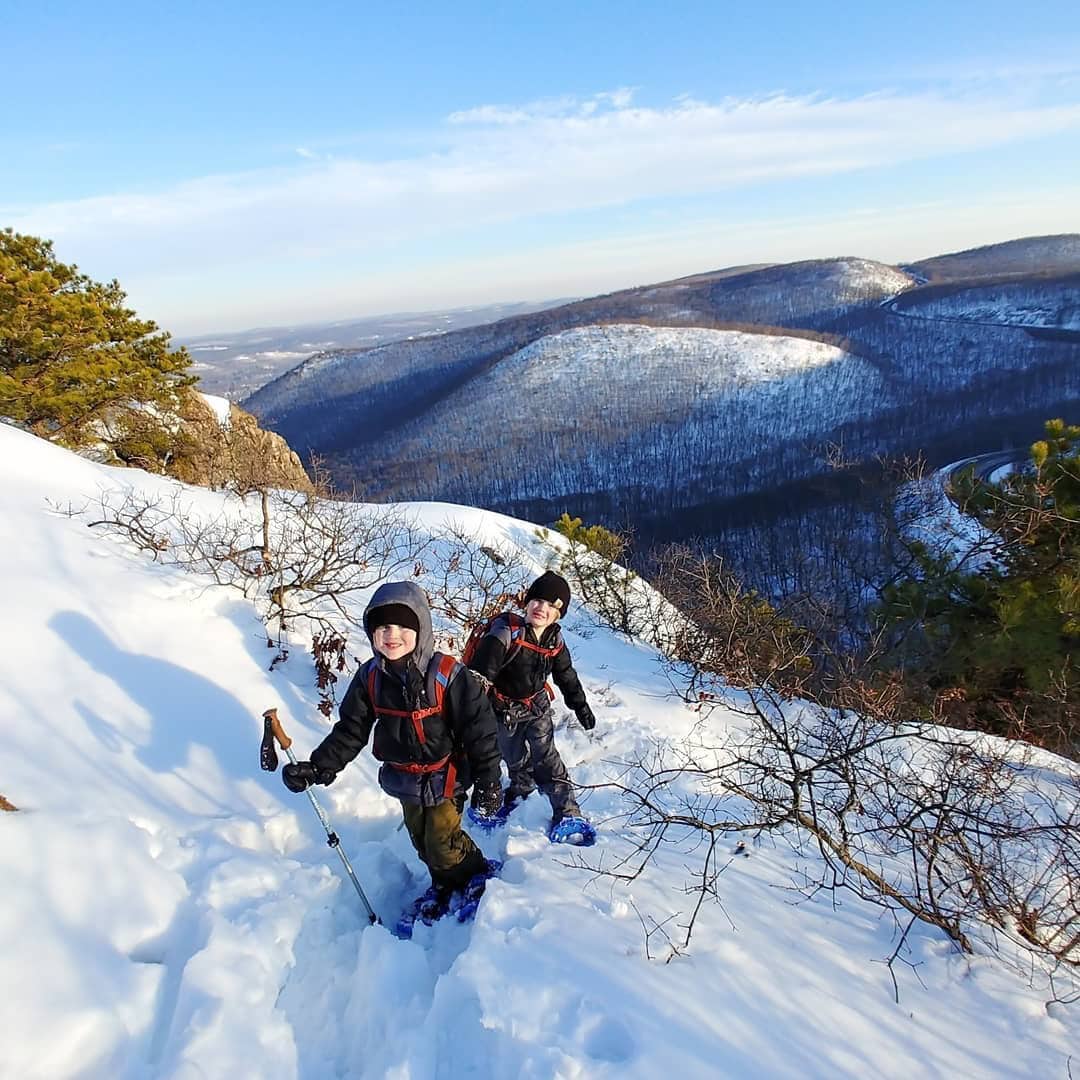
Mohonk Preserve: Known for its diverse terrain, this preserve offers a mix of beginner-friendly routes and challenging trails for seasoned adventurers. You can rent snowshoes and enjoy other winter activities with a day pass or winter sports pass.
Harriman State Park: With over 200 miles of trails, this park is ideal for snowshoers seeking solitude, with peaceful, snow-covered woodlands.
Catskill Mountains: A favorite among experienced snowshoers seeking elevation and adventure in pristine wilderness. A notable snowshoe hike in this region is Slide Mountain, the highest peak in the Catskills.
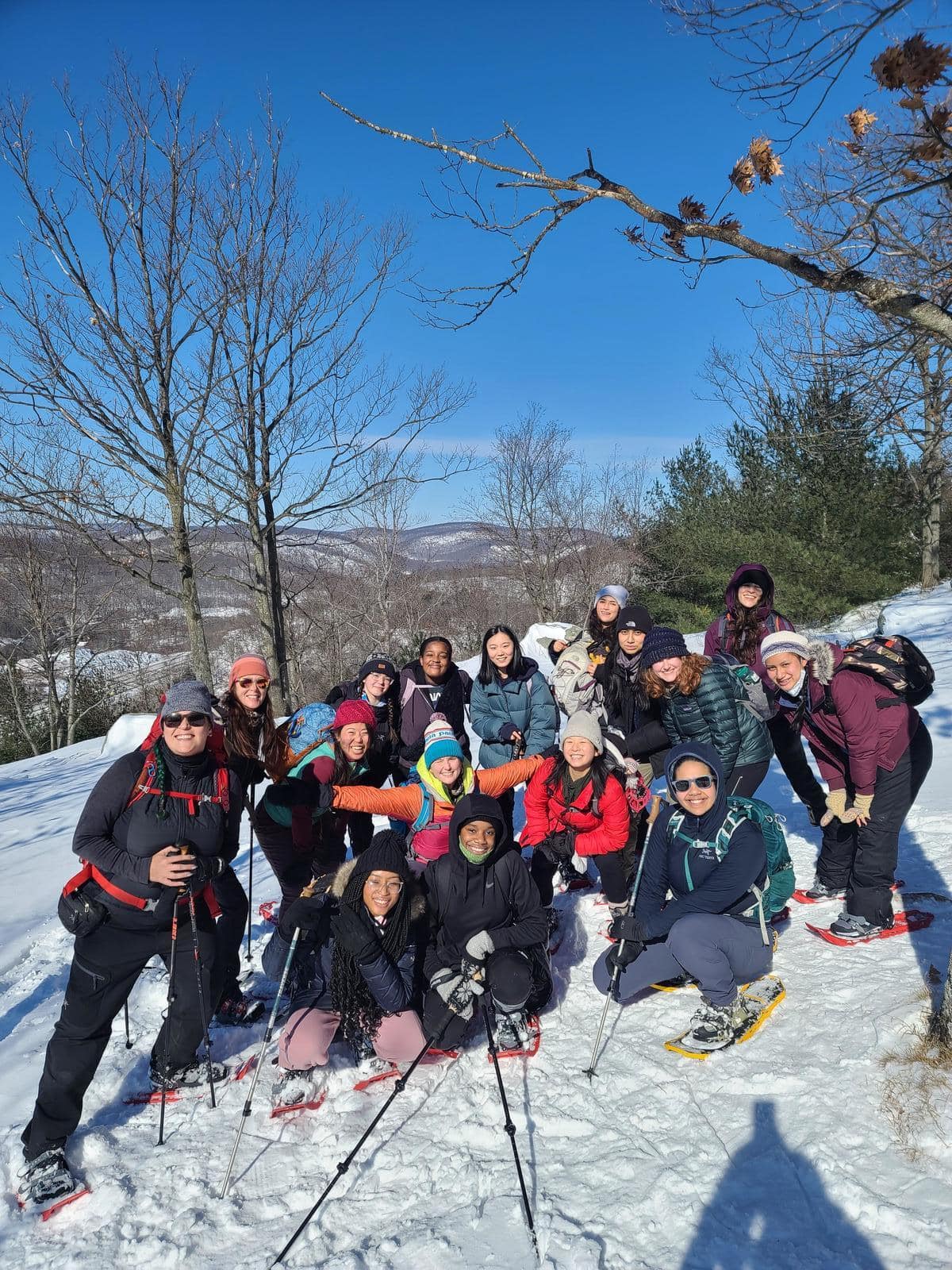
Winter Gear Essentials
Proper gear ensures safety and comfort while snowshoeing. Rebecca Howe-Parisio, environmental educator at Sam’s Point, emphasizes the importance of layering with moisture-wicking materials, as cotton can be hazardous in cold, wet conditions. Key items include the following:
Clothing: Insulated and water-resistant layers, gaiters, and sturdy, insulated boots. Marty Molitoris, a licensed guide and founder of Alpine Endeavors, uses the phrases “cotton kills” and “be bold, start off cold,” to remind people that moisture-wicking material and staying dry are critical during snowy adventures.
Snowshoes: They aren’t terribly expensive to buy, including used — but even more affordably, they’re also available to rent and try at many park locations. You can also rent snowshoes at Rock and Snow in New Paltz or online from Outdoor Equipment Rentals to have them shipped right to you.
Safety Gear & Accessories: Always pack the “10 Essentials” — a set of first aid and emergency items that can save lives if someone is injured or the weather changes. In addition, trekking poles, microspikes for icy spots, and plenty of high-protein snacks are wise to bring along. Plus, you may not always think about sunscreen in winter, but the reflected glare off snow can be extra-searing. Don’t forget sunglasses and sunscreen (and rub a little under that nose!).
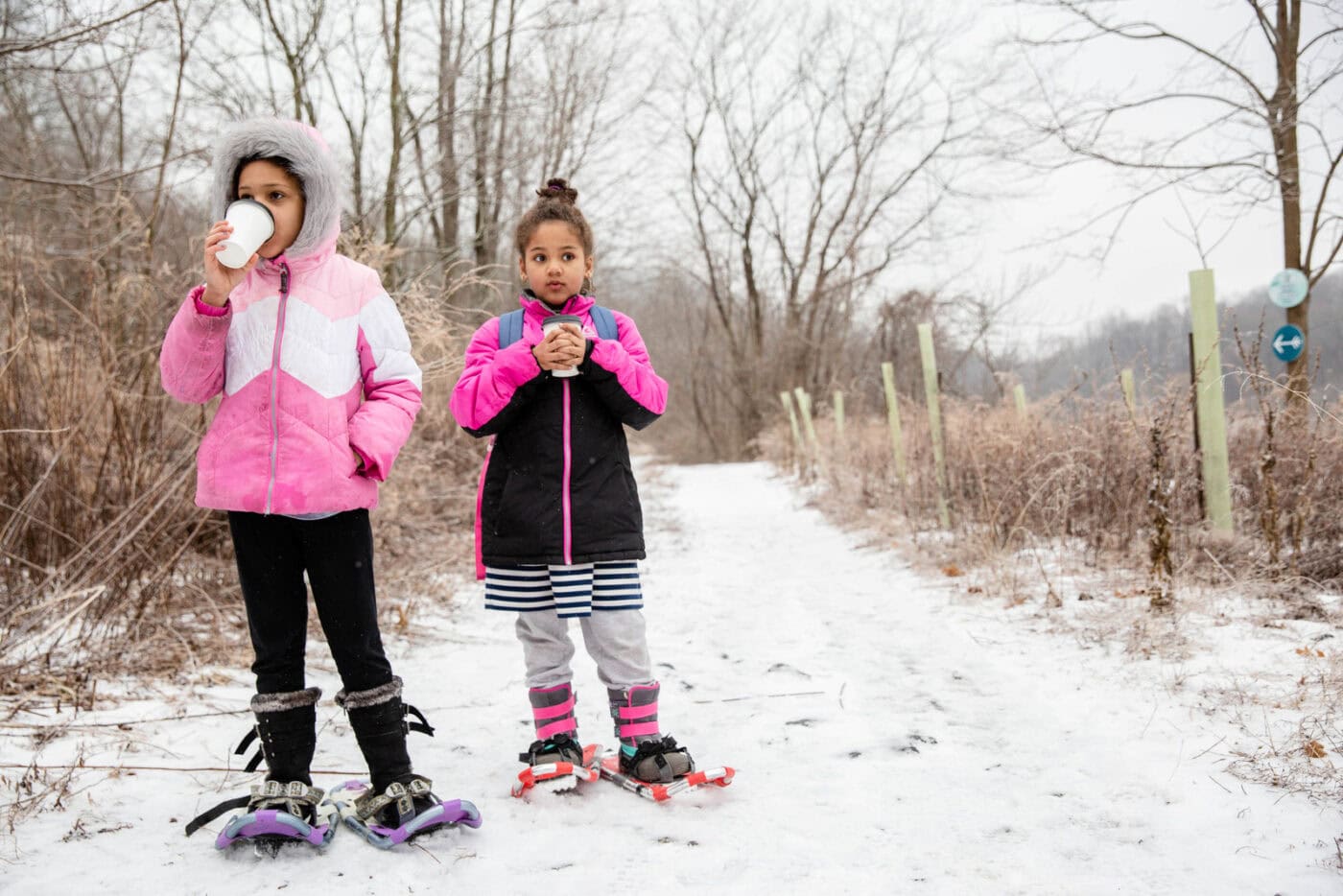
Snowshoeing Etiquette and Safety Tips
Snowshoeing is as much about respecting nature and fellow adventurers as it is about the activity itself. Follow these etiquette tips to ensure an enjoyable experience for all:
Stay on designated trails: Many trails, like those at Minnewaska, are groomed for cross-country skiing. Never disturb ski tracks, which can be dangerous for skiers. And avoid following someone else’s snowshoe tracks, which could easily lead you off-trail.
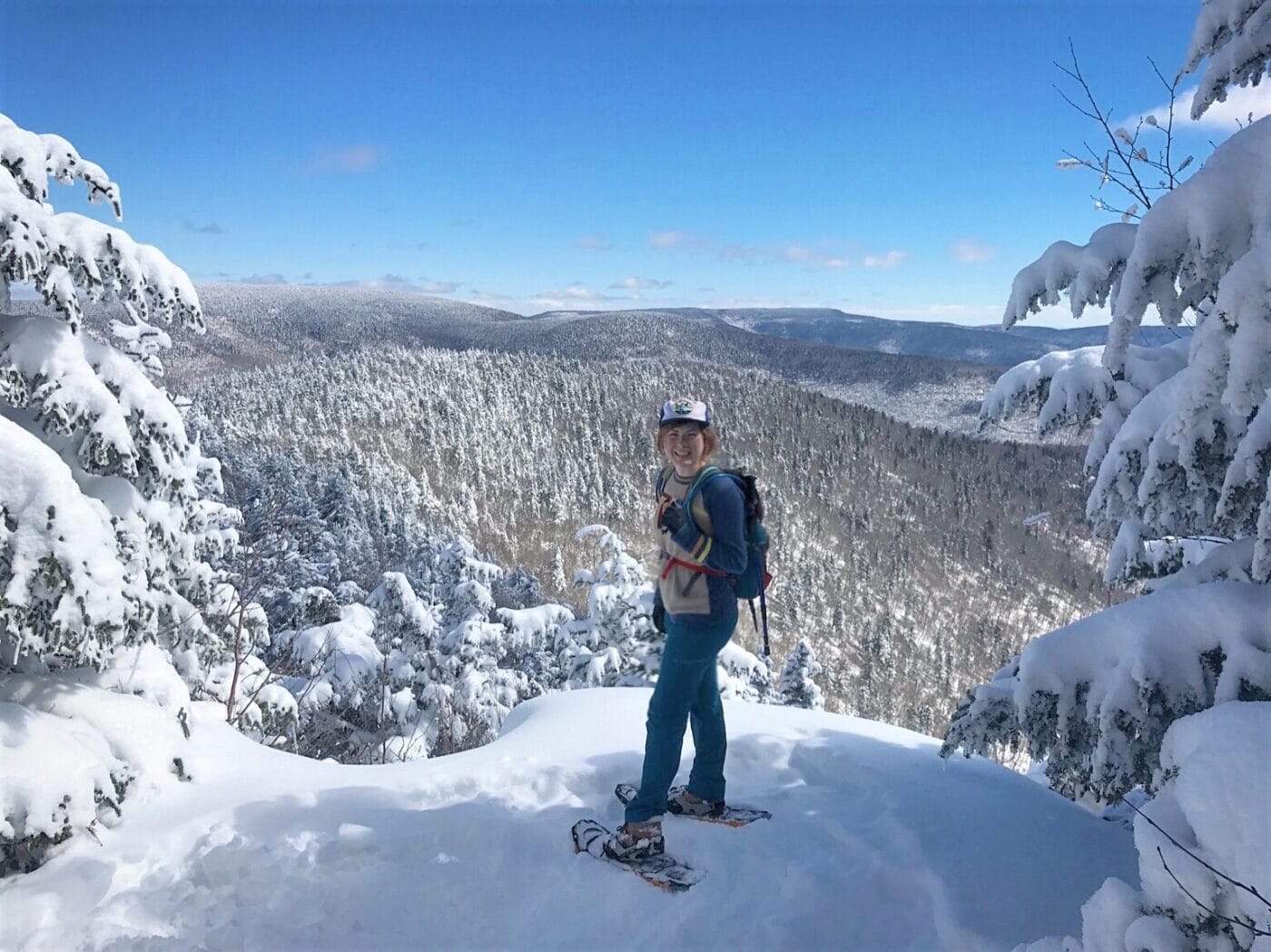
Yield the trail: It’s easy for trails to get blocked up with people snowshoeing at different paces. Step aside for faster snowshoers or hikers.
Leave no trace: Snow may seem durable, but follow trail markers carefully to avoid damaging hidden terrain or plants.
Plan ahead: Check the weather at your destination, not just your home. Share your itinerary with someone and carry the “10 Essentials.” And finally, Molitoris says, choose trails based on fitness level and experience, considering factors like elevation gain and snow conditions. Stay safe and have fun!
